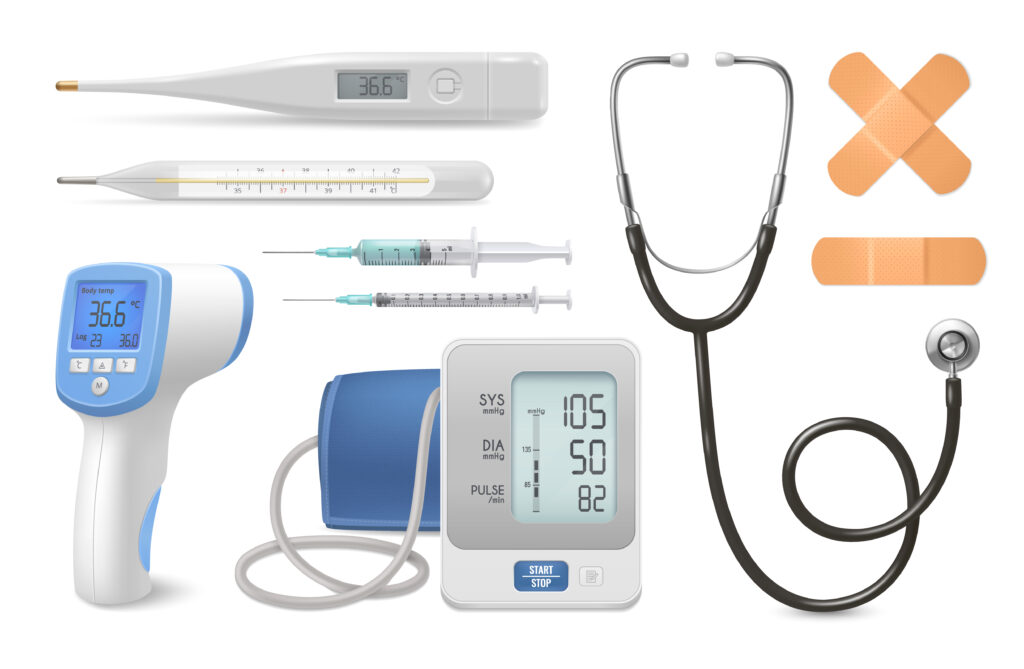
In the ever-evolving landscape of medical device innovation, the role of 3D prototyping has become indispensable. This comprehensive guide delves into the intricacies of designing 3D prototypes for medical devices, providing valuable insights for engineers, designers, and healthcare professionals. Join us on a journey through the key steps, challenges, and best practices that define the intersection of 3D prototyping and medical device design.
Understanding the Significance of 3D Prototyping in Medical Device Design
The Evolution of Prototyping in Healthcare
- Historical Context: Explore the historical progression of prototyping in the medical field and its transformative impact on the development of life-saving devices.
The Role of 3D Prototyping in Modern Healthcare
- Advancements in Technology: Understand how technological advancements, especially in 3D printing and imaging, have revolutionized the prototyping process for medical devices.
Benefits of 3D Prototyping in Medical Device Design
- Precision and Customization: Explore how 3D prototyping enables the creation of precise and customized medical devices tailored to individual patient needs.
Key Steps in Designing 3D Prototypes for Medical Devices
1. Conceptualization and Ideation
- Defining the Problem: Start with a clear understanding of the medical problem the device aims to solve, laying the foundation for a focused ideation process.
2. Detailed Design and Modeling
- CAD Software Utilization: Dive into the use of Computer-Aided Design (CAD) software to create detailed 3D models, emphasizing accuracy and adherence to medical specifications.
3. Material Selection for Medical Grade Prototypes
- Choosing Biocompatible Materials: Navigate the crucial process of selecting materials that meet medical standards, ensuring biocompatibility, sterilization, and durability.
4. Integration of Electronics and Sensors
- Smart Medical Devices: Explore the incorporation of electronics and sensors into 3D prototypes, paving the way for the development of smart and interconnected medical devices.
5. Prototyping Technologies
- 3D Printing Techniques: Delve into various 3D printing techniques, such as stereolithography (SLA) and fused deposition modeling (FDM), and their applications in medical device prototyping.
6. Iterative Testing and Refinement
- User-Centric Approach: Embrace an iterative testing approach that prioritizes user feedback, allowing for continuous refinement and improvement of the prototype.
Overcoming Challenges in 3D Prototyping for Medical Devices
1. Regulatory Compliance
- Navigating Regulatory Landscape: Address the challenges associated with ensuring regulatory compliance in the design and prototyping phases.
2. Cost Considerations
- Balancing Innovation and Cost: Explore strategies for optimizing costs without compromising on the innovation and quality of medical device prototypes.
3. Intellectual Property Protection
- Securing Innovations: Discuss the importance of intellectual property protection and strategies for safeguarding innovative ideas throughout the prototyping process.
Best Practices for Designing 3D Prototypes in the Medical Device Industry
1. Collaborative Design Approach
- Interdisciplinary Collaboration: Emphasize the significance of interdisciplinary collaboration between engineers, designers, and healthcare professionals to ensure a holistic and effective design process.
2. Design Validation and Verification
- Ensuring Safety and Efficacy: Highlight the importance of rigorous validation and verification processes to guarantee the safety and efficacy of medical device prototypes.
3. Documentation and Traceability
- Comprehensive Documentation: Stress the need for meticulous documentation and traceability throughout the prototyping journey, supporting future development and compliance.
Optimizing Design for Manufacturing (DFM) in 3D Prototyping
1. Material Compatibility with Manufacturing Processes
- Seamless Transition to Production: Discuss the importance of selecting materials compatible with both prototyping and mass production processes, ensuring a smooth transition from 3D prototypes to final manufacturing.
2. Scalability and Manufacturing Efficiency
- Streamlining Production Processes: Explore strategies for optimizing designs for scalability, focusing on factors that enhance manufacturing efficiency and reduce production costs.
Future Trends in 3D Prototyping for Medical Devices
1. Biofabrication and Organ Printing
- Revolutionizing Healthcare: Delve into the emerging field of bio fabrication and organ printing, showcasing how 3D prototyping is contributing to the development of functional tissues and organs.
2. Artificial Intelligence Integration
- AI in Prototyping: Explore the intersection of artificial intelligence (AI) and 3D prototyping, highlighting how machine learning algorithms are enhancing the design and optimization processes for medical devices.
3. Patient-Specific Prototyping
- Personalized Medicine: Discuss the trend towards patient-specific prototyping, where medical devices are tailored to the unique anatomical and physiological characteristics of individual patients.
Addressing Ethical Considerations in 3D Prototyping for Medical Devices
1. Informed Consent in Prototyping
- Respecting Patient Autonomy: Explore the ethical considerations surrounding informed consent when involving patients in the prototyping phase, ensuring transparency and respect for their autonomy.
2. Privacy and Data Security
- Protecting Patient Information: Discuss the importance of robust privacy measures and data security protocols, especially when patient-specific data is utilized in the design and testing of medical device prototypes.
Case Studies: Successful Applications of 3D Prototyping in Healthcare
1. Prosthetics and Orthopedic Devices
- Customized Solutions: Explore real-world examples of how 3D prototyping has revolutionized the development of prosthetics and orthopedic devices, providing customized solutions for patients.
2. Surgical Planning and Training
- Enhancing Surgical Precision: Highlight case studies demonstrating how 3D prototyping is used for surgical planning, training, and the creation of anatomical models to improve procedural outcomes.
The Collaborative Future of 3D Prototyping in Medicine
1. Interdisciplinary Innovation
- Bridging Disciplines: Emphasize the collaborative nature of 3D prototyping, bringing together experts from various fields to drive innovation and address complex healthcare challenges.
2. Open-Source Prototyping Initiatives
- Global Collaboration: Showcase the impact of open-source prototyping initiatives, where the global community collaborates to share designs, resources, and expertise for the collective advancement of medical device innovation.
Conclusion: Paving the Way for Transformative Healthcare Solutions
The journey of designing 3D prototypes for medical devices is an ever-evolving narrative, filled with challenges, breakthroughs, and ethical considerations. By embracing the future trends, optimizing for manufacturing, addressing ethical concerns, and drawing inspiration from successful case studies, the medical device industry stands on the brink of transformative advancements.
In this collaborative and interdisciplinary landscape, where engineers, designers, healthcare professionals, and patients converge, the synergy of 3D prototyping is paving the way for more precise, personalized, and effective healthcare solutions. As we continue to push the boundaries of innovation, the fusion of cutting-edge technology, ethical principles, and real-world applications ensures that 3D prototyping remains a powerful catalyst in shaping the future of medical device design and healthcare delivery.
Unleash innovation with MLVOLT, your premier industrial design partner. Elevate visions to reality with our expertise in creative design, cutting-edge technology, and collaborative excellence. Explore our portfolio and services for a transformative design journey. Visit our site today to bring your ideas to life!

Founder of MLVOLT PRIVATE LIMITED & Ex-marketing manager of MBA CHAI WALA